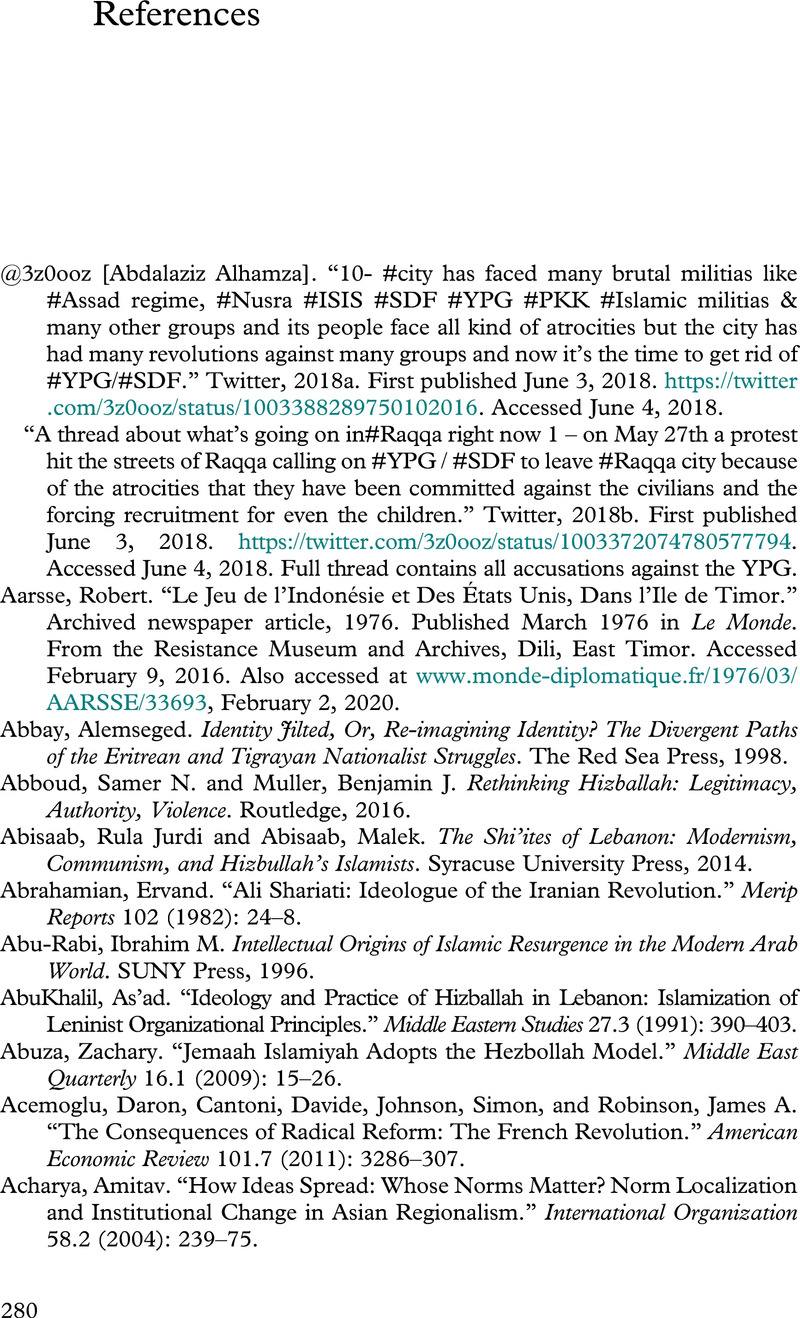Book contents
- Governing for Revolution
- Governing for Revolution
- Copyright page
- Dedication
- Contents
- Figures
- Map
- Tables
- Acknowledgments
- Abbreviations
- 1 Introduction
- 2 Iron and Blood
- 3 Rebel Goals Determine Governance Strategies
- 4 Research Design and Alternative Explanations
- 5 The Eritrean Liberation Struggle
- 6 Changing Goals and Changing Governance
- 7 Modeling Revolutionary Governance in East Timor
- 8 Hezbollah
- 9 A Statistical Analysis of Rebel Goals and Rebel Governance
- 10 Conclusion
- References
- Index
- References
References
Published online by Cambridge University Press: 05 March 2021
- Governing for Revolution
- Governing for Revolution
- Copyright page
- Dedication
- Contents
- Figures
- Map
- Tables
- Acknowledgments
- Abbreviations
- 1 Introduction
- 2 Iron and Blood
- 3 Rebel Goals Determine Governance Strategies
- 4 Research Design and Alternative Explanations
- 5 The Eritrean Liberation Struggle
- 6 Changing Goals and Changing Governance
- 7 Modeling Revolutionary Governance in East Timor
- 8 Hezbollah
- 9 A Statistical Analysis of Rebel Goals and Rebel Governance
- 10 Conclusion
- References
- Index
- References
Summary

- Type
- Chapter
- Information
- Governing for RevolutionSocial Transformation in Civil War, pp. 280 - 310Publisher: Cambridge University PressPrint publication year: 2021



